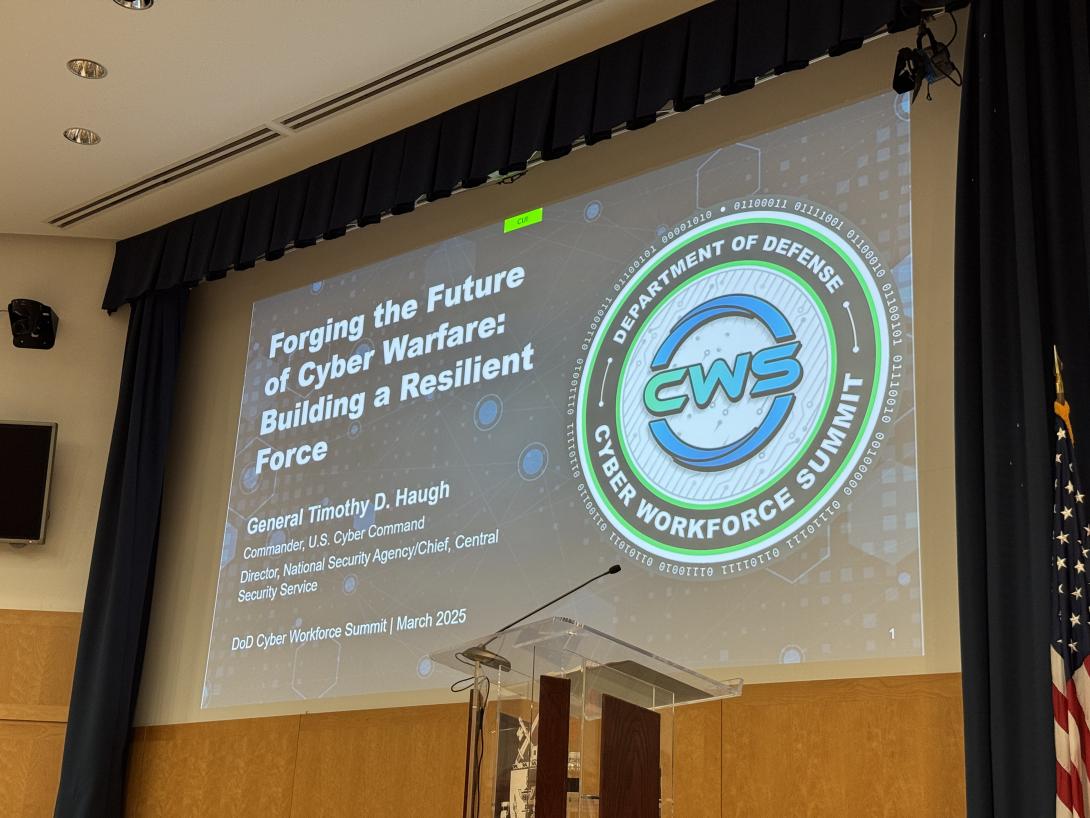Future U.S. Cyber Readiness Will Involve Collaboration, Training and Innovation
Gen. Timothy Haugh, USAF, commander of the U.S. Cyber Command and director of the National Security Agency (NSA), shared a clear message at the DoD CIO Cyber Workforce Summit: our nation’s most pressing issues are the rapid rise of complex cyber threats and the necessity to meet the challenges the future of cyber warfare presents.
“The president has given us a clear mission to achieve peace through strength as we face one of our most dangerous security environments in our nation's history.”
Haugh emphasized the critical need to leverage emerging technologies like artificial intelligence. The United States can no longer afford to concede that geography and distance will provide sufficient space to respond to foreign attacks.
“Emerging cyber-related technologies, including artificial intelligence, represent a similar leap in the transformation of the battlefield for our national security. Continual deterrence of cyber aggression in the defense or homeland demands a fundamental shift in how we respond to external threats.”
Nation-state adversaries are constantly evolving their cyber capabilities to undermine U.S. superiority. “Make no mistake, cyber is on the battlefield today,” said Haugh.
Under his leadership, the NSA set up the Cybersecurity Collaboration Center to create partnerships that:
- Close critical intelligence gaps by understanding different government and industry perspectives.
- Scale the defense and security of the defense industrial race.
- Counter adversary aggression, intellectual property theft and other evolving threats.
Today, the “triple C” is approaching 1,500 partnerships with both small and large businesses “that have a real impact on our national security.” The NSA works closely with the Department of Homeland Security and the FBI to enable them to “counter cyber disinformation and ensure U.S. election systems are secure.”
Some successful missions include the response to Chinese state-sponsored malicious cyber actors and their exploitation of vulnerabilities of Microsoft Exchange servers, “combating ransomware threats like those affecting Colonial Pipeline, JBS” and recent ransomware attacks at casinos.
“Collaboration is a critical part of our cyber strategy key to understanding and countering adversarial threat activity,” said Haugh. “A threat to one partner is a threat to all.”
A threat to one partner is a threat to all.
Today, the Department of Defense is achieving cybersecurity workforce requirements with Cyber Command 2.0, a plan that aims to enhance total force readiness and innovation.
Another key component of the cyber workforce is a revision of a previous model.
“The revised total force generation model for cyberspace operations creates a more capable and agile total force to counter current and future cyber threats. In coordination with the services, our focus is to recruit military members from across the department, potentially reclassifying personnel from one career field to another.”
This revised generation model will be bolstered by three key enablers:
- A talent management organization, which aims to identify, recruit and retain highly skilled cyber professionals.
- An advanced cyber training and education center, which addresses rapidly developing threats and delivering advanced training.
- The Cyber Innovation and Warfare Center, which fosters cutting-edge advancements in technology against the most challenging cyber targets for the NSA.






Comments